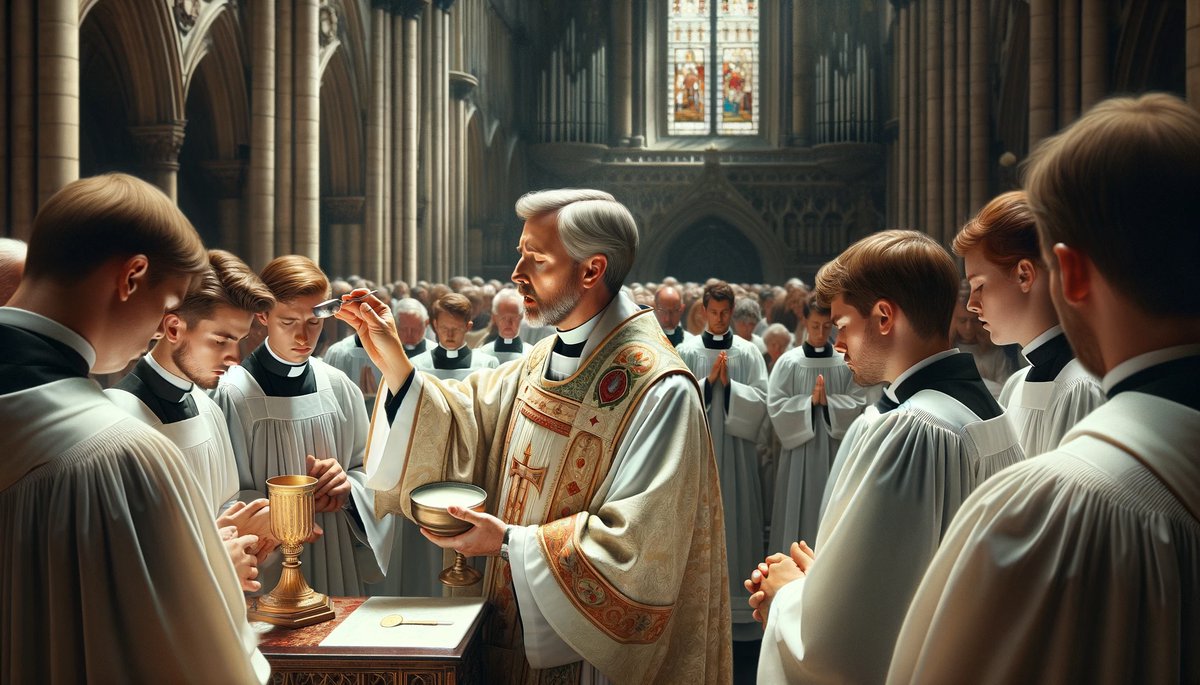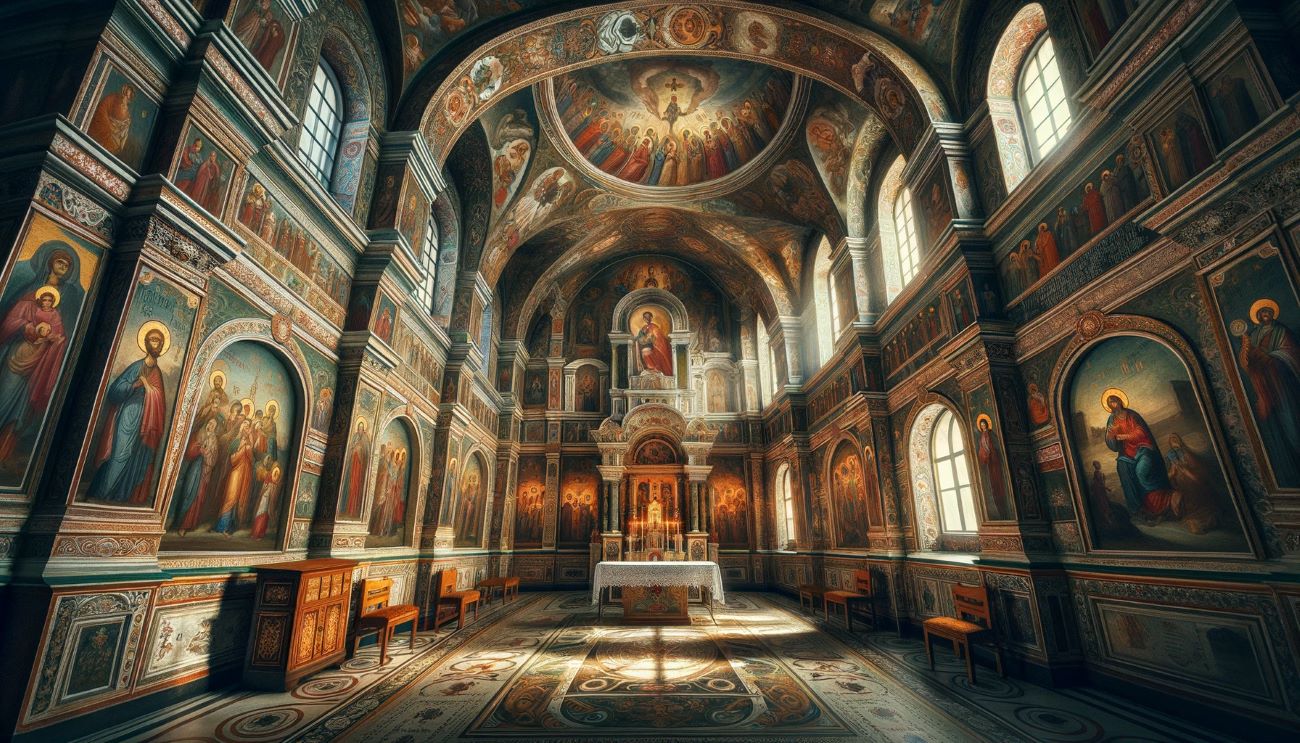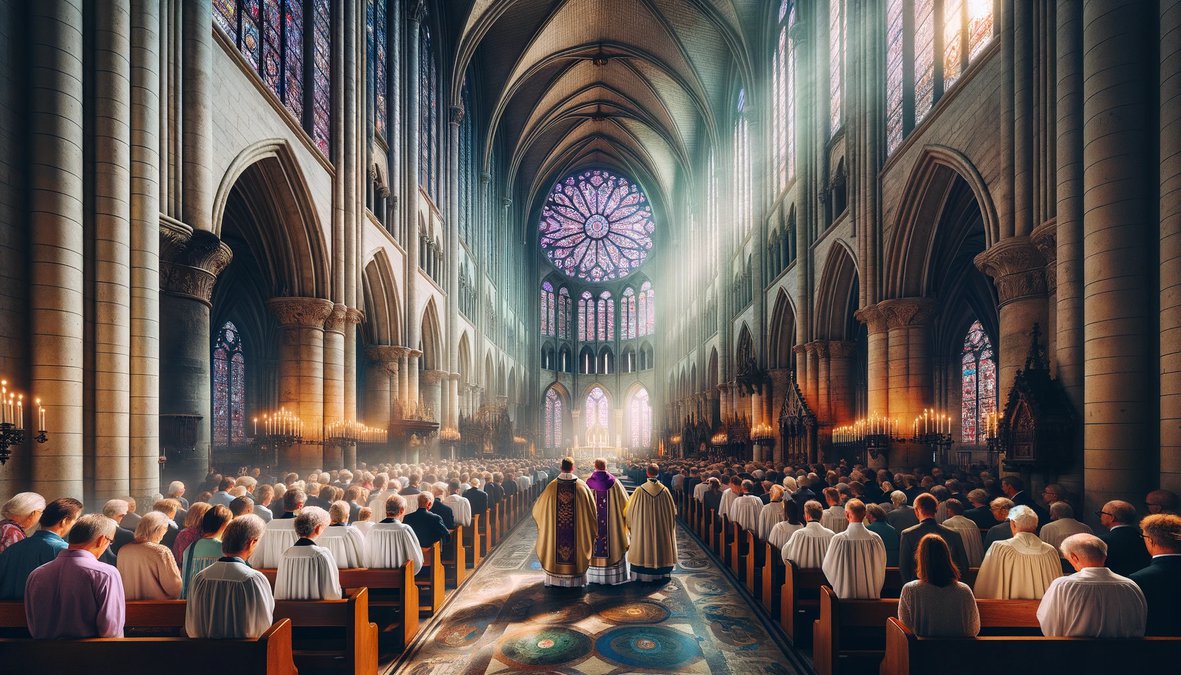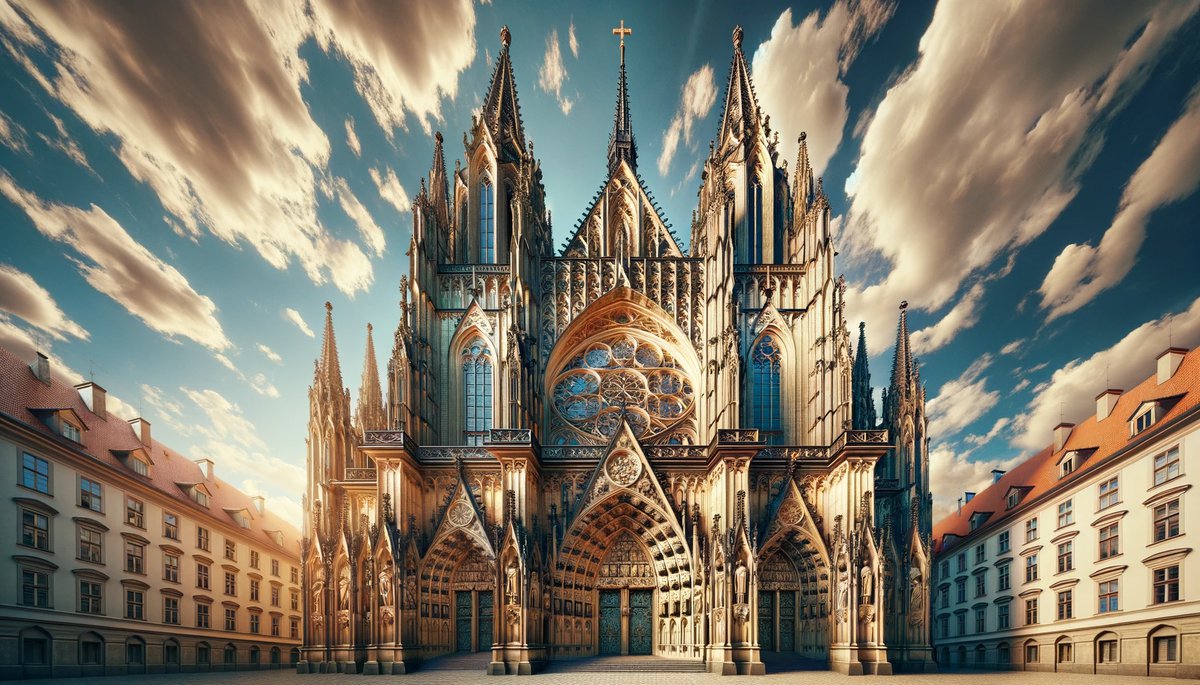Home>Arts and Culture>What Religion Is St. David’s Cathedral


Arts and Culture
What Religion Is St. David’s Cathedral
Published: February 15, 2024
Jason DeRose, Managing Editor at Christian.net, uses his expertise in religion and journalism to deepen understanding of faith's societal impacts. His editorial leadership, coupled with a strong academic background, enriches the platform’s diverse content, earning him recognition in both journalism and religious circles.
Discover the religious significance of St. David's Cathedral and its impact on arts and culture. Explore the history and influence of this iconic religious site.
(Many of the links in this article redirect to a specific reviewed product. Your purchase of these products through affiliate links helps to generate commission for Christian.net, at no extra cost. Learn more)
Table of Contents
Introduction
St. David's Cathedral, nestled in the picturesque city of St. Davids in Pembrokeshire, Wales, stands as a testament to centuries of religious and cultural significance. This magnificent edifice, dedicated to the patron saint of Wales, Saint David, holds a revered place in the hearts of the Welsh people and draws visitors from around the world. The cathedral's rich history, architectural grandeur, and spiritual allure make it a captivating focal point for both religious pilgrims and history enthusiasts.
As we delve into the depths of St. David's Cathedral, we will uncover the profound influence of Christianity in Wales, the cathedral's role as a pilgrimage site, and the religious practices that continue to enrich its hallowed halls. Join us on a journey through time and faith as we explore the enduring legacy of St. David's Cathedral and the profound impact it has had on the cultural tapestry of Wales.
Read more: When Was St. David’s Cathedral Built
History of St. David's Cathedral
The history of St. David's Cathedral is a captivating tapestry woven with threads of faith, resilience, and architectural splendor. Its origins can be traced back to the 6th century when Saint David, also known as Dewi Sant, founded a monastic settlement in the serene valley of the River Alun. This humble beginning marked the birth of a spiritual legacy that would endure for centuries to come.
The original monastic community flourished under Saint David's guidance, drawing devout followers and scholars seeking enlightenment. Over time, the modest wooden structures gave way to more substantial stone buildings, reflecting the growing prominence of the site. However, the early structures were not destined to stand the test of time, as they succumbed to Viking raids and the ravages of time.
In the 12th century, Bishop Bernard and the Norman Lord, Roger de Montgomery, embarked on a monumental endeavor to rebuild the cathedral in a grander scale. The result was a breathtaking fusion of Romanesque and Gothic architecture, characterized by soaring arches, intricate carvings, and majestic spires. This architectural marvel not only served as a place of worship but also as a symbol of the enduring spirit of the Welsh people.
Throughout the centuries, St. David's Cathedral weathered periods of prosperity and adversity, bearing witness to historical events that shaped the destiny of Wales. It stood as a beacon of hope during times of turmoil, offering solace to the faithful and a sanctuary for those in need. The cathedral's resilience mirrored the unwavering faith of the Welsh people, cementing its status as a cultural and spiritual cornerstone.
Today, St. David's Cathedral stands as a living testament to the enduring legacy of Saint David and the indomitable spirit of the Welsh nation. Its hallowed halls echo with the whispers of centuries past, inviting visitors to immerse themselves in a journey through time and faith. The history of St. David's Cathedral is a testament to the enduring power of belief and the timeless allure of architectural magnificence.
Influence of Christianity in Wales
The influence of Christianity in Wales transcends mere religious significance, permeating the very essence of Welsh culture and identity. Dating back to the early days of Celtic Christianity, the faith took root in the rugged landscapes of Wales, intertwining with the traditions and beliefs of the indigenous people. The arrival of Saint David, a revered figure in Welsh history, further solidified the Christian legacy, shaping the spiritual landscape of the nation.
Christianity in Wales flourished amidst the backdrop of invasions, political upheavals, and cultural shifts, serving as a unifying force during times of uncertainty. The monastic communities, including the one founded by Saint David, became centers of learning, artistry, and spiritual enlightenment, nurturing a distinct Welsh Christian ethos.
The spread of Christianity in Wales was not without its challenges, as the arrival of Norman and Anglo-Norman influences brought about tensions and conflicts. However, the resilience of the Welsh people and their unwavering devotion to their faith ensured the preservation of their unique Christian traditions.
The enduring influence of Christianity in Wales is evident in the proliferation of ancient churches, chapels, and religious sites that dot the Welsh landscape. These sacred spaces stand as testaments to the enduring faith of generations past and continue to serve as focal points for communal worship and spiritual reflection.
St. David's Cathedral, as the preeminent religious edifice in Wales, stands as a beacon of the enduring Christian legacy. Its significance extends beyond religious boundaries, embodying the cultural, historical, and architectural heritage of Wales. The cathedral's role as a pilgrimage site further underscores the profound impact of Christianity on the Welsh collective consciousness, drawing pilgrims and visitors from far and wide.
In essence, the influence of Christianity in Wales is a tapestry woven with threads of faith, resilience, and cultural identity. It has left an indelible mark on the Welsh psyche, shaping traditions, values, and the very fabric of Welsh society. The enduring legacy of Christianity in Wales is a testament to the profound impact of faith on the human experience, transcending time and leaving an indelible imprint on the cultural landscape.
St. David's Cathedral as a Pilgrimage Site
St. David's Cathedral holds a revered status as a pilgrimage site, drawing devout pilgrims and curious visitors alike to embark on a spiritual journey amidst the breathtaking landscapes of Pembrokeshire, Wales. The cathedral's hallowed grounds resonate with centuries of sacred tradition, inviting pilgrims to partake in a transformative experience that transcends the boundaries of time and space.
Pilgrimage to St. David's Cathedral is steeped in the rich tapestry of Welsh religious heritage, offering pilgrims an opportunity to connect with the spiritual essence of Saint David and the enduring legacy of Celtic Christianity. The pilgrimage experience encompasses a profound sense of reverence, as pilgrims traverse the ancient pathways leading to the cathedral, each step imbued with a sense of purpose and introspection.
The pilgrimage route to St. David's Cathedral is not merely a physical journey but a spiritual odyssey, allowing pilgrims to immerse themselves in the sacred landscapes that have borne witness to centuries of faith and devotion. As pilgrims approach the cathedral, the awe-inspiring silhouette of its spires and the tranquil beauty of the surrounding countryside serve as a prelude to the spiritual awakening that awaits within its hallowed walls.
Upon reaching St. David's Cathedral, pilgrims are greeted by the palpable aura of sanctity that permeates the sacred precincts. The cathedral's architectural grandeur, adorned with intricate carvings and stained glass windows, serves as a testament to the enduring power of faith and human creativity. Within its sacred confines, pilgrims find solace in moments of prayer, reflection, and spiritual communion, forging a profound connection with the divine and with fellow pilgrims sharing in this transformative experience.
The pilgrimage to St. David's Cathedral is not confined to a single moment in time; rather, it represents a timeless journey of the soul, transcending the constraints of the present to embrace the spiritual heritage of Wales. Pilgrims depart from the cathedral enriched by the experience, carrying with them a renewed sense of purpose, a deeper understanding of their faith, and cherished memories of a pilgrimage that has left an indelible mark on their hearts.
In essence, St. David's Cathedral stands as a beacon of spiritual pilgrimage, beckoning travelers to embark on a transformative quest of faith, introspection, and cultural immersion. The cathedral's enduring allure as a pilgrimage site embodies the timeless resonance of the human spirit, inviting pilgrims to partake in a sacred odyssey that transcends the boundaries of the physical world, leaving an indelible imprint on their souls.
Religious Practices at St. David's Cathedral
The religious practices at St. David's Cathedral are steeped in centuries of tradition, reverence, and spiritual devotion. As the preeminent religious edifice in Wales, the cathedral serves as a sacred sanctuary where devout worshippers and visitors alike partake in a tapestry of religious rituals and observances that enrich the spiritual fabric of the site.
At the heart of St. David's Cathedral's religious practices lies the timeless tradition of communal worship. Each day, the hallowed halls of the cathedral resonate with the harmonious strains of choral music, as the ethereal melodies of hymns and sacred chants fill the air, lifting the spirits of worshippers and echoing through the sacred space. The rhythmic cadence of prayer and contemplation creates a sense of unity and spiritual harmony, fostering a profound connection with the divine and with fellow worshippers.
The cathedral's clergy, adorned in traditional vestments, lead congregants in solemn rituals that have been passed down through generations, infusing each gesture and intonation with a sense of sacred continuity. The celebration of the Eucharist, or Holy Communion, stands as a central pillar of religious observance at St. David's Cathedral, symbolizing the spiritual nourishment and unity of the faithful. The sacramental rites, including baptism, confirmation, and marriage, are performed with solemnity and reverence, marking significant milestones in the lives of the faithful.
Beyond the structured rituals of worship, St. David's Cathedral offers moments of quiet contemplation and spiritual introspection. The sacred precincts of the cathedral provide a serene refuge for private prayer and meditation, allowing worshippers to seek solace and spiritual renewal amidst the timeless beauty of the sacred space. The flickering candlelight and the fragrant aroma of incense create an atmosphere of tranquility, inviting worshippers to commune with the divine in moments of personal reflection.
The cathedral's religious practices extend beyond the confines of its hallowed halls, encompassing a calendar of religious festivals and events that punctuate the liturgical year. From the joyous celebrations of Christmas and Easter to the solemn observance of saints' feast days, each occasion serves as an opportunity for worshippers to come together in fellowship and devotion, uniting in the shared experience of faith and tradition.
In essence, the religious practices at St. David's Cathedral embody the enduring spirit of Welsh Christianity, weaving together the threads of tradition, devotion, and communal worship. The cathedral stands as a living testament to the timeless resonance of religious observance, inviting worshippers to partake in a sacred journey of faith and spiritual enrichment within its hallowed precincts.
Read more: St Giles Cathedral: What Religion
Conclusion
In conclusion, St. David's Cathedral stands as a timeless testament to the enduring legacy of Saint David, the profound influence of Christianity in Wales, and the indomitable spirit of the Welsh people. From its humble origins as a monastic settlement to its current status as a revered pilgrimage site, the cathedral has woven a rich tapestry of faith, history, and cultural significance that continues to captivate visitors from around the globe.
The cathedral's history, characterized by periods of resilience and renewal, mirrors the enduring spirit of the Welsh nation. Its architectural grandeur, a fusion of Romanesque and Gothic styles, serves as a testament to the creativity and craftsmanship of generations past, while its sacred precincts offer a sanctuary for spiritual reflection and communal worship.
The influence of Christianity in Wales, deeply intertwined with the nation's cultural identity, finds poignant expression within the hallowed halls of St. David's Cathedral. The cathedral's role as a pilgrimage site further underscores the profound impact of faith on the human experience, inviting pilgrims to embark on a transformative journey of spiritual introspection and cultural immersion.
The religious practices at St. David's Cathedral, steeped in tradition and reverence, create a sacred tapestry of communal worship, sacramental rites, and moments of personal reflection. The cathedral's clergy, adorned in traditional vestments, lead congregants in timeless rituals that foster a sense of spiritual unity and continuity, enriching the spiritual fabric of the site.
In essence, St. David's Cathedral stands as a living testament to the enduring power of faith, resilience, and cultural heritage. Its significance transcends religious boundaries, embodying the timeless resonance of the human spirit and inviting visitors to partake in a sacred odyssey that leaves an indelible imprint on the soul. As the hallowed heart of Welsh Christianity, St. David's Cathedral continues to inspire awe, reverence, and spiritual renewal, inviting all who cross its threshold to embark on a journey through time and faith.














